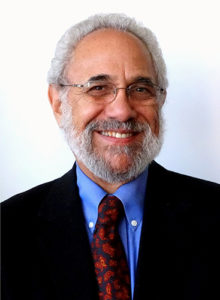The hope implicit in the concept of social determinants is that broad changes in the social, economic, and political structures of our communities, nations, and world can result in improved behavioral health of large populations, such as regions, age-groups, social classes, genders, disabilities, and race/ethnicities.

Michael B. Friedman, LMSW
Specifically, the hope is that social changes could (1) reduce the incidence and prevalence of mental and substance use disorders, (2) increase access to effective care and treatment, (3) facilitate recovery, (4) reduce health and behavioral health inequities, and (5) promote psychological well-being.
The perspective of social determinants has emerged over the past two decades as an important complement to other perspectives on the nature of behavioral disorders and psychological well-being—including the biological, psychological, environmental, ecological, socio-economic, post-modernist, and others. It provides particularly powerful counterpoint to the current emphasis on the brain as the root of behavioral illness and health.
According to the World Health Organization and many public health researchers, social determinants of behavioral health are the economic, social, and political conditions that influence a person’s behavioral health over the course of a lifetime including the perinatal period, childhood, adolescence, adulthood, and older adulthood.
The emphasis in much writing about social determinants is on the high risk that people who are raised in, or currently live in, the difficult and/or dangerous conditions typical of poverty will develop behavioral difficulties during their lives.
Frequently noted social determinants of poor outcomes in life include unemployment and low income; poor education; unstable, squalid, and/or dangerous housing and living conditions; family and community violence; bigotry and racism, social isolation, poor access to health and behavioral health care; political and social inequality; limited access to healthy food; lack of safe space for exercise; dysfunctional policies regarding the distribution and use of alcohol and drugs; and more.
But the concept of social determinants applies equally well to the conditions that contribute to achieving positive behavioral health, i.e. to achieving psychological well-being—including economic stability, safety, good education, access to health and behavioral health care, supportive communities, career opportunities, etc.
The apparent impact of social determinants on behavioral illness and health suggests that, in addition to pressing for more and better direct services, behavioral health advocates should address socio-economic and political conditions and seek broad social change.
If poverty is a major contributor to the development of mental and substance use disorders and of emotional distress, shouldn’t behavioral health advocates work to reduce unemployment, to increase wages, and secure adequate income supports for those who need them?
If poor education increases the risk of having behavioral health problems, shouldn’t advocates call for better education?
If good peri-natal health care contributes to well-being in later life, shouldn’t advocates call for equal access to good health care in early childhood and, for that matter, over the complete life course?
The list of social needs to improve and promote population behavioral health is quite long and daunting. Better housing, improved living conditions, reduced family and community violence, reduced bigotry and racism, reduced social isolation, improved access to health and behavioral health care, fundamental changes in laws regarding substance abuse, and an over-riding need to reduce political, economic, and social inequality.
Very big tasks, which raise the question of whether it is realistic for behavioral health advocates to add social change to their ongoing efforts for public policy seeking to meet the vast unmet needs for direct services.
After all, in the real world of social advocacy, various groups take on one or another issue and hope that somehow the political process will give a bit here and a bit there towards a gradual advance towards social justice overall.
And, there have been gains for behavioral health over time—more clinical and community support services delivered to more people more effectively since the advent of community mental health policy.
However, there has apparently been little or no progress in improving overall behavioral health in the United States. Since the turn of the 21st century suicides, overdose deaths, and alcohol related deaths (the so-called “deaths of despair”) have increased substantially. The prevalence rates of psychotic, affective, anxiety, and substance use disorders certainly don’t appear to have gone down over the past few decades.
Yes, individuals and families have benefitted from direct services, and too few people who could benefit from clinical and community support services get them. It is critical to keep pushing to address unmet needs.
But it is also important to recognize the impact of social determinants. So, even though it would require a major shift in thinking and would be very difficult to achieve, it may well be time to add major social change to the behavioral health advocacy agenda in the hopes of promoting and improving the overall behavioral health of the American people.
Michael B. Friedman, LMSW was Founder and Director or the Center for Policy, Advocacy, and Education of MHA of NYC until he retired in 2010. He continued to teach at Columbia University School of Social Work until 2019. Now he serves as a volunteer Chair of The Brain and Behavioral Health Advocacy Team of AARP of Maryland. He can be reached at mbfriedman@aol.com.






